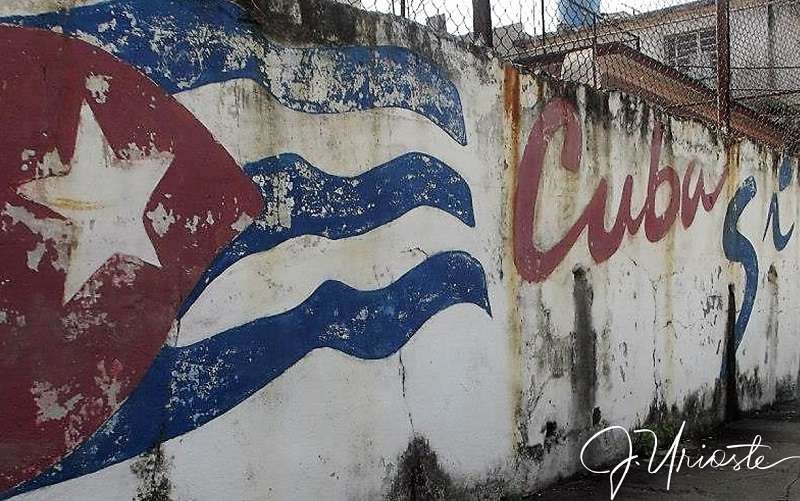In the early morning of January 1, 1959, everything changed for Cuba. While not everything was perfect, it was better than what came later. No one ever imagined that the “triumph of the revolution” would bring a 60-year communist dictatorship that included systematic human rights violations, torture, imprisonment, hunger, injustice, and countless other misfortunes.
Throughout 60 years, everything Fidel said was “holy word,” and as my Cuban friends say, “not even the leaves on the trees moved unless Fidel blew them.” The more Cubans fell into poverty, the richer Fidel became. The less freedom on the island, the more control.
On the island or in exile, Cubans have a saying: “Every Cuban has in his family a prisoner, an exile or a mortal victim of the dictatorship.” It is complicated to know the exact number of the victims of the Cuban dictatorship, although we have some approximate idea. Cuba has documented 7,179 deaths: of which 3,110 were by firing squad, 1,170 extrajudicial executions including the “attempted illegal exit” from the country, 847 dead and/or missing in combat including the Sierra del Escambray and Bay of Pigs conflicts, and 18 political prisoners killed while on hunger strike. The reality points to many, many more.

Just a few days after the triumph of the Cuban revolution, Raul Castro, Fidel’s younger brother, ordered the execution by firing squad of dozens of police and military personnel who had served under Fulgencio Batista. Ernesto “Ché” Guevara also did his part. To get an idea of the new regime’s brutality, in the early morning of January 11-12, 1959, in the Loma de San Juan in Santiago de Cuba, hundreds of people were placed facing a freshly dug mass grave and executed without trial.
Anyone can find it in the NGO “Archivo Cuba.” It was the largest documented massacre of Castroism, with 75 simultaneous executions.
Archivo Cuba has recorded deaths, disappearances, and human rights violations for political reasons since 1959. Amnesty International and other activists as well. Unverified data due to the lack of access to Cuban archives estimate more than 5,000 people shot. The last “officially” execution ordered by the state, was in 2003, when three young men were sentenced to death for stealing a tourist boat to flee the island.
Hundreds of thousands of people, even more than a million, have passed through its jails. While there were about fifteen prisons during Batista’s “dictatorship,” there are now around two hundred, fifty of them maximum security prisons. All of them, absolutely all, in subhuman conditions.
On July 11, everything changed. The people, after 60 years, had had enough of the dictatorship and, with the cry of “Patria y Vida” (Homeland and Life), said ENOUGH!
Protests and marches have taken place in San Antonio de los Baños, Havana, Camagüey and Matanzas. The repressive government has shut down communications, the Internet, and canceled social networks that are blamed for “fanning the flames of discontent.” Until this morning, there were hundreds of missing people and a desperate “president” who blames the U.S. trade embargo, without mentioning, of course, that Cuba has 70 trade agreements and last year had trade relations with many countries, and yes… among them the United States of America.
Today, Cuba finds itself on a razor’s edge. For the first time in 60 years, people are raising their voices, breaking the siege of the state’s monopoly of information. With the Internet, smartphones, and cultural globalization, Pandora’s box has been opened in Cuba. Access to information is becoming the engine of change on the island, no matter how much the communists want to avoid it. There is no turning back now. A fuse has been lit, which has the potential to ignite something perhaps huge.
The protests only demonstrate what we all know from the outside and that now the government will understand: It is impossible to hide the world’s happenings. It is impossible to avoid citizen mobilization. It is impossible to prevent people from rebelling against the shortage of essential goods and food. Thus, the internal policies of Cuban Castro’s communism have failed.
Many who defend the regime from the comfort of capitalism, sitting in a Starbucks behind their iPhones, assert that nothing will change, that a transformation in Cuba is impossible, either by the force of the state or by the “brainwashing” of the state for 60 years. I have news for you. You are wrong. That change has already begun, and if the history of Cuba has taught us anything, it is that when a Cuban says “Hasta aquí,” which means “enough”, caballero… they mean it!
Let’s hope that with the support of the international community, we can become witnesses of the cry “PATRIA, VIDA Y LIBERTAD” (Homeland, Life, and Freedom) to become a reality.
For Times Media Mexico
José E. Urioste
Merida Yucatan
July 14, 2021
Facebook – @JoseUriosteMx
Twitter – JoseUrioste_
—
José E. Urioste is a Yucatecan-Cuban businessman and professional in Business Intelligence. He is also a writer, editorialist, and columnist. He has worked in different media groups and has contributed to radio stations, newspapers, and magazines on various topics ranging from professional to editorial.
